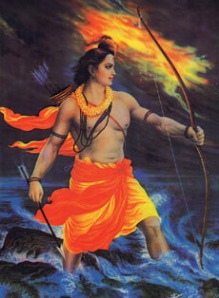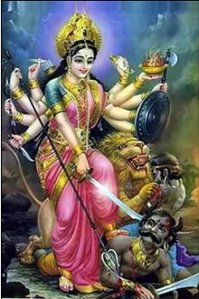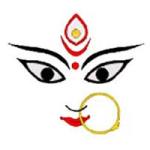Archive
Vijayadashmi, Dassera/Dussehra , Navaratri – Indian festival of Victory
Dassera is also known “Vijayadashmi“. Dassera marks the end of Navratri, the festival of nine days. Different parts of India celebrate the festival in different ways. Some celebrate it as Navaratri, some as Vijaya-Dashami, and some as Dussehra, in worship of Goddess Durga or celebrating Rama’s victory over Rawana.
Navratri : “Nav” means nine and “ratri” means nights, therefore the word “Navratri“. Dassera : means the Tenth Day, The 9 nights festival of Navratri begins on the first day of Ashwina of the bright fortnight.
1) Victory of Rama over Ravana:
Dassera marks the triumph of Lord Ram’s victory. After vanquishing him, Ram with Seeta and Laxman returned victorious to his kingdom of Ayodhya on Dassera day.
The Burning of the Ravana Statue:
On Dassera, the tenth day the celebration of good over evil is marked by burning the effigy of Ravana. The statue of the 10 headed demon Ravana is made of wood, hay etc with fireworks inside.
2) Victory of Durga over Mahisura:
Celebration of the victory of Durga over the demon Mahishasura.
CELEBRATIONS :
Simollanghan (Crossing the territory ): In this ritual the territory of a village is crossed in the third part (‘prahar’) of the day, that is in the afternoon.
Exchange of “Aptya Chi Pane” : There is ritual of exchanging “Shami leaves” or “aptya chi pane”. The leaves are exchanged among relatives & friends as gold by saying “Sone Gya Sonyasarakhe Raha” which means take gold and be like gold.
Shastrapuja (Worship of instruments ) Peoples clean their weapons, arrange them in a row and worship them. Farmers and artisans too worship their respective instruments.
CELEBRATION in India:
Gujarat and western India: The most famous Navaratri celebrations are held in the western states of India (Gujarat and Maharashtra). Traditional dances in the form of Dandiya and Garba take place almost everywhere. The dancers move around in a circle, with different steps around a lamp, which signifies the Eternal Light of the Durga. Generally Gujarati men and women wearing colorful dresses dance around in a circle by clapping their hands or decorated sticks to the rhythm of the devotional songs.
In Maharashtra, celebrations are slightly different. Navratri is dedicated to Goddess Durga while the Vijayadashami is dedicated to Saraswati, the Goddess of Knowledge. Here, this day is considered auspicious to start education, buy new homes, and start new ventures.
In West-Bengal, Navaratri is celebrated in the form of Durga Puja. Celebrated with true devotion, huge idols of the Goddess Durga posed as killing the demon Mahishasura are worshipped everywhere in West Bengal. Huge ‘pandals’ are set up every where and devotees in large numbers visit to worship Goddess Durga.
Tamil Nadu: In Tamil Nadu, the first three days are dedicated to the worship of Lakshmi, the Goddess of wealth and prosperity. The next three days are devoted to Saraswati, the Goddess of learning and arts and the last three days to Shakti (Durga).
Karnataka and Andhra Pradesh: In Karnataka and Andhra Pradesh, women arrange ‘Bommai Kolu’, a special placing of dolls in various costumes decorated with flowers and ornaments on specially prepared steps.
Punjab: Navratri is celebrated in Punjab by fasting for seven days. On the eighth day or Ashtami, the fast is broken.
Sources:
http://festivalsofindia.in/navratri/Celebrations.asp
http://www.kamat.com/kalranga/festive/dasara.htm
http://www.hindujagruti.org/hinduism/festivals/navaratri/dasera.php




Recent Comments